Clade Monocots | Clade Angiosperms Rank Species | |
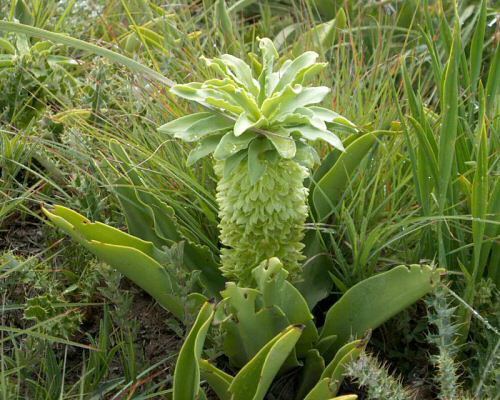 | ||
Similar Eucomis, Eucomis bicolor, Eucomis comosa, Fritillaria bucharica, Crocus cancellatus | ||
Eucomis autumnalis, the autumn pineapple flower, or autumn pineapple lily, is a species of flowering plant in the family Asparagaceae, native to South Africa. It is a summer flowering deciduous bulbous perennial. The flower stem to 40 cm (16 in) rises from a basal rosette of broad waxy leaves. The stalk (produced from mid to late summer) is tipped with a raceme of up to 125 flowers.
Contents
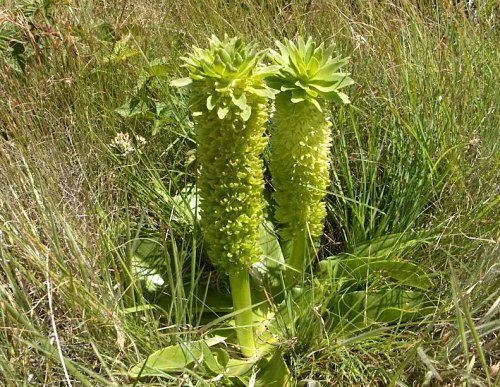
Description
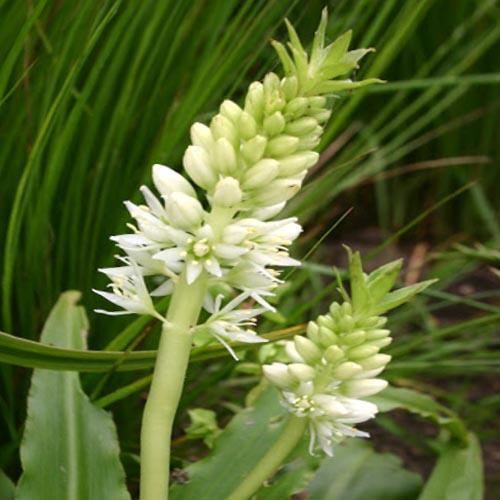
The bulb of Eucomis autumnalis is up to 10 cm (4 in) across. The plant (including the inflorescence) can grow up to 60 cm (24 in) tall. The single inflorescence is a cylindrical raceme atop a stout stem, carrying more than 100 flowers, greenish-white in colour. The raceme is tipped with a tuft of leaf-like bracts, looking somewhat like the leaves on a pineapple top (the reason for the common name for this genus). When the flowers have been fertilised, the flowers turn green, making the inflorescence decorative while the trilocular (three-chambered) fruit ripens to produce shiny black round seeds.
Taxonomy
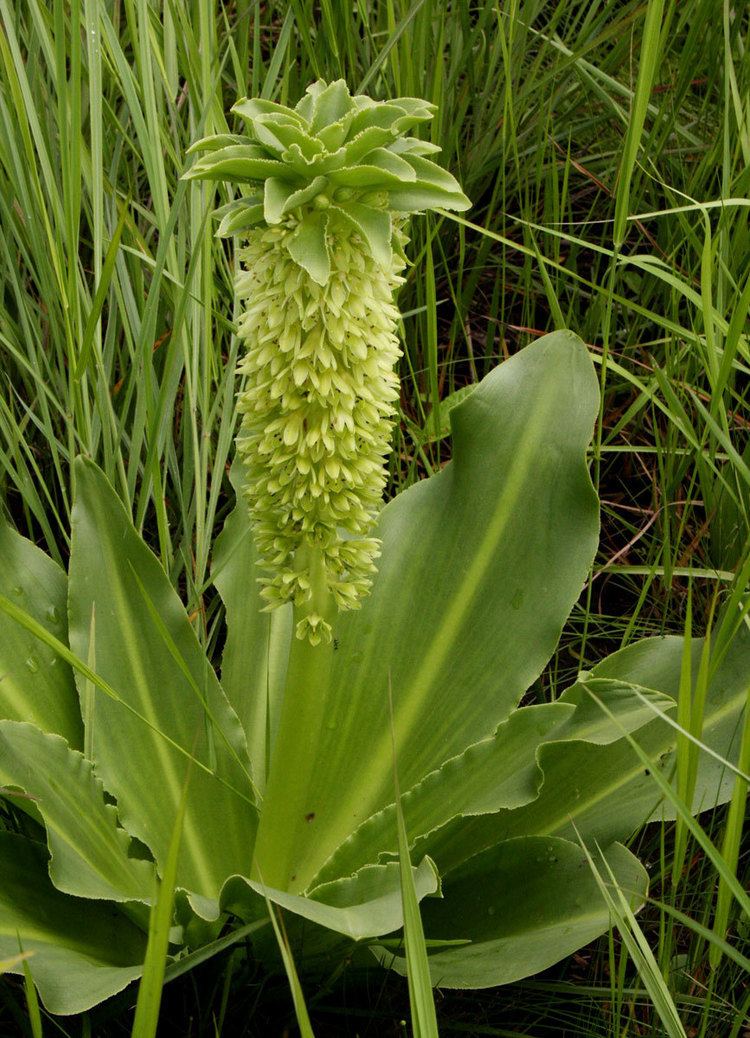
The specific epithet autumnalis refers to its flowering and fruiting time. Different botanists have given a variety of names to this species, often because a variant (subspecies) was treated as a separate species.
Subspecies
As of April 2014, the World Checklist of Selected Plant Families recognizes two subspecies:
An earlier recognized subspecies, E. autumnalis subsp. amaryllidifolia, is now accepted as a separate species, Eucomis amaryllidifolia.
Cultivation
Eucomis autumnalis makes a good horticultural specimen. Plant them in groups in the herbaceous border, in large pots, or in rockeries. The flowers last well, in the garden as well as the vase, and after flowering, the ripening fruit on the inflorescence are also decorative. Easy to grow, these bulbs should be planted with their tops at ground level. They prefer a position of full sun (though they will tolerate partial shade), and prefer a rich and well composted soil. Adding well-rotted compost every spring and lots of water during the growing season will result in better flowering in the coming seasons. These plants are winter dormant, and frost hardy to Zone 9 (−7 °C / 20 °F).
This plant has gained the Royal Horticultural Society's Award of Garden Merit.
A cultivar is available under the name E. autumnalis 'White Dwarf'. However, as of 2012, the RHS Plant Finder regards this as a variety of E. zambesiaca rather than E. autumnalis.
Propagation
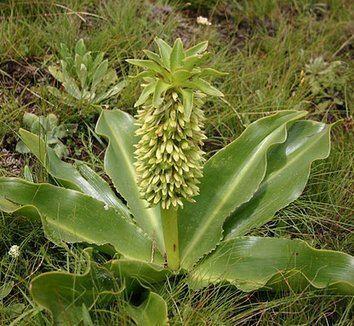
Propagate Eucomis autumnalis from seed sown in spring. Seedlings should emerge within 4–6 weeks. Seedlings should be protected for the first few years and are ready to be planted in the garden in their third year. Seedlings may take up to 5 seasons to bloom. The bulb also may produce offsets, which can be removed while the plant is dormant. The bulblets can then be planted the following spring. Leaf cuttings can be taken while the plant is in active growth. If sections of 5 cm each can be planted in sterilised and well-drained soil are kept is a humid environment, tiny bulbs should form within a few months. Sterilised bulb scales, leaf bases or flower stalks can be used in tissue culture.
Chemistry
The homo-isoflavones 4′-o-methyl-punctatin, autumnalin and 3,9-dihydro-autumnalin can be found in E. autumnalis.
